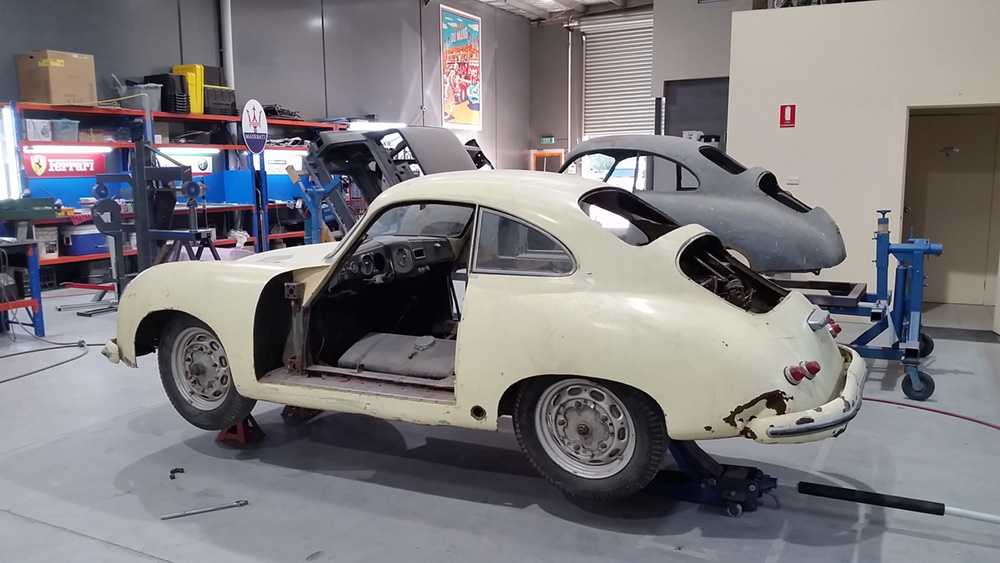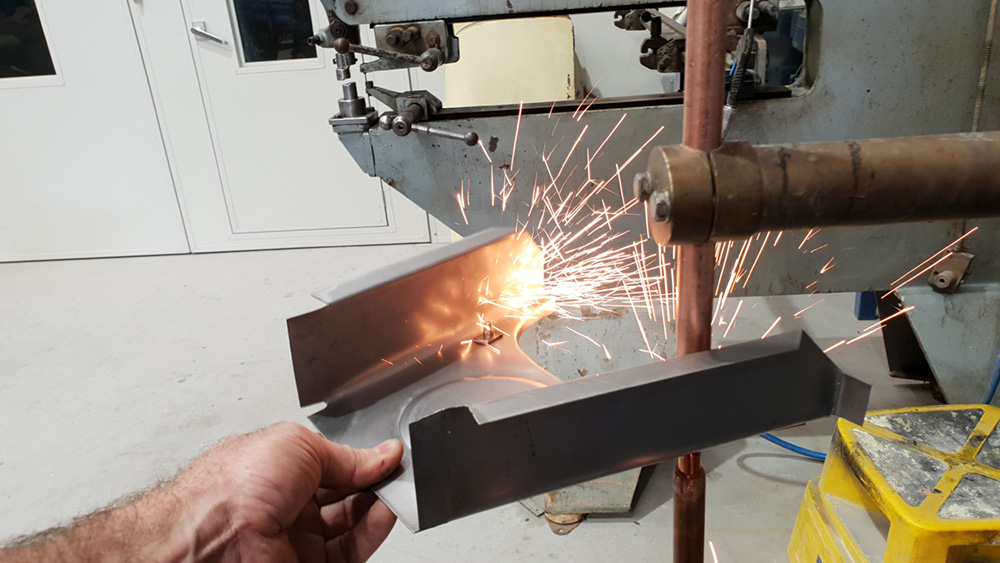Restoration of a Classic Car. (the leap of faith)

One of the first rules when acquiring a viable candidate to restore, would be looking for the best possible body. I don’t just mean something that looks shiny, I mean the structure of the car, the metal underneath that is holding it all together. The single most variable in the entire restoration costs is the metal work. This can range anywhere from one week’s work, to six months work, just to get through the metal repair stage. Many budgets can be blown out in this one stage alone.
The second rule I’d like to enforce, is completeness. Trying to find missing pieces for a classic car that might be 50 to 70 years old is not easy. If a required used part is simply not available or is no longer manufactured component, it may require to be fabricated again. This is no easy task, usually time consuming and often expensive.
The third rule of inclusions you would like to find in your classic car candidate, would be a matching numbered Engine or even better, complete running gear. Maybe this one shouldn’t be in the third rule because many people now feel it’s the most important one as lately the emphasis on matching numbered cars has increased dramatically and more commonly shown in an escalated resale value. A matching numbered vehicle does not mean that the vehicle identification number, (VIN) has to be the exact same number stamped on the engine. A matching numbered classic car is where you find a vehicle that has the original engine and drive line that the was installed in the vehicle when it left the factory. Some vehicles show the body number and engine number on a VIN Plate that would have been riveted to the body somewhere. Other vehicles might only give you a VIN number stamped somewhere on the car and you may need to request the engine number from the manufacturer. If this is the case it is wise to purchase a certificate of authenticity (COA) from the manufacturer to confirm in writing the vehicles heritage and identification numbers.
Everyone has a horror story that they have heard of or even experienced themselves with classic cars getting pulled apart, stuffed in the corner of the workshop and never seeing the light of day again. I would just like to explain where I feel these situations begin to go wrong. Firstly, budget, if you have bitten off more than you can chew with an unrealistic budget, not only will your car never be finished you’re just throwing your money away. Secondly, the wrong man for the job. If someone has given you whole heap of jargon about how great they are, there is one sure way to sort them out, ask them to show you a photo of the worst car they have ever restored. Then ask for all the photos outlining how they addressed the problems and got the car back on the road. I guarantee this will sort out the men from the boys.
By all means get other opinions and talk to as many restorers as you can, but remember the best path forward may not be the workshop with the cheapest hourly rate. If somebody has a discounted rate of 20% over another, but the most capable person in the workshop is 50% slower than the more expensive restoration shop, who is going to give you the better deal? The slightly higher hourly rate might be warranted in the number of different ways. Higher standards of tradesmen with more years of experience, professional equipment, and a clean, healthy working environment keeping the employees satisfied each day.
A phone call I received many years ago when I worked for my previous employer, Jag E-Type Restorations in Melbourne Australia, was quite amusing and it went a little like this… A customer on the phone who had purchased some new fabricated panels by myself asking advice how to fit and weld them into place. This is a common request and of course no problem to help out. The funny thing was when he said, “You know, I wish your workshop was closer, I would just bring the car to you and let you do it, save me the bloody hassle.” Knowing this guy was only 50 km away made me chuckle, as I turn around to look at a shop full of E-Type Jaguars sent in from all around the world for restoration. I’ve worked on many classic sports cars that were shipped nationally or internationally, as the cost of shipping is not enough to consider when you are sure you’re sending it to the right place.
I remember a moment back in 2015 when I was locking up the workshop at night and taking my usual sweep around all the gas bottles to be sure everything was off. I noticed six of the seven cars in the workshop all had one thing in common, they all came to us from other workshops as half-finished restorations. Two from one shop that had closed down and the other four from separate workshops for various reasons but most commonly due to experiencing difficulties whilst tackling the metal work stage. The workshop that closed down was a local business, renowned for giving an upfront price for all of this work. The owner of the shop personally confessed to me that it was the wrong way you do business, as it is impossible to guess how much it is going to cost to restore any vehicle, let alone a classic car. The sad fact here is, he unfortunately lost his business, money he and his family couldn’t afford to lose and he was only trying to give people a dream they wanted.
Once you’ve found the right restorer for both your classic car and you, make sure you stay involved, make frequent visits to the workshop to see the work advancing and you will get a far better understanding of the degree of expertise involved. Restoration done properly, should leave nothing unturned. From each and every single component of the vehicle, to the engine, transmission, differential, gauges, seats, trim work, suspensions, glass, bright work, chrome plating, metal work, painting and of course the best part, assembly. There is so much to see and while you are out driving your restored classic car, you will have a far better appreciation and understanding for what is around you.
Don’t forget the gag reel. Good restorers will take tonnes of photos. They don’t cost much anymore and they prove to be great references to show the extent of the restoration. Also showing the professionalism carried out within the repairs. If you were to one day you sell your classic car that you had restored, you can sit the inquisitive acquirer down in front of your computer and show them a couple of thousand photos of the restoration while you step out to make them a cup of tea. They will soon realise why they are paying a premium for your classic car over someone else’s.
In conclusion, I would just like to add, during all the years of restoring classic cars, there is no better feeling than to witness the emotions expressed when an owner receives the keys for his or hers freshly restored classic car. Their eyes may glaze over as they walk up to it for the first time, minds may wander back to cherished moments years ago, a little tremble extended to their hands as the key heads towards the ignition, some deep breaths and increased heart rate as they fire up the engine for the first time. I couldn’t imagine myself doing anything else that would grant me this sort of satisfaction while doing a job I simply love.
Greg Newton.
P.S. It may be well over 30 years ago now, but I still remember my early days in a workshop and being as green as a cucumber, I’m sure there was a few things I had to be told a number of times before I remembered to get it right. The moments I will always remember from back then was the customers that expressed their thanks and appreciation. Don’t forget to show your appreciation to all the workers within the shop. A simple handshake or a pat on the back goes a long way. No matter how big or small the workshop is, I would suggest that everybody has been involved with your classic car and have put their absolute best talents into creating something personal, lasting and most memorable for you to experience.






